How a Private English Country House Became the Real Star of ‘Saltburn’
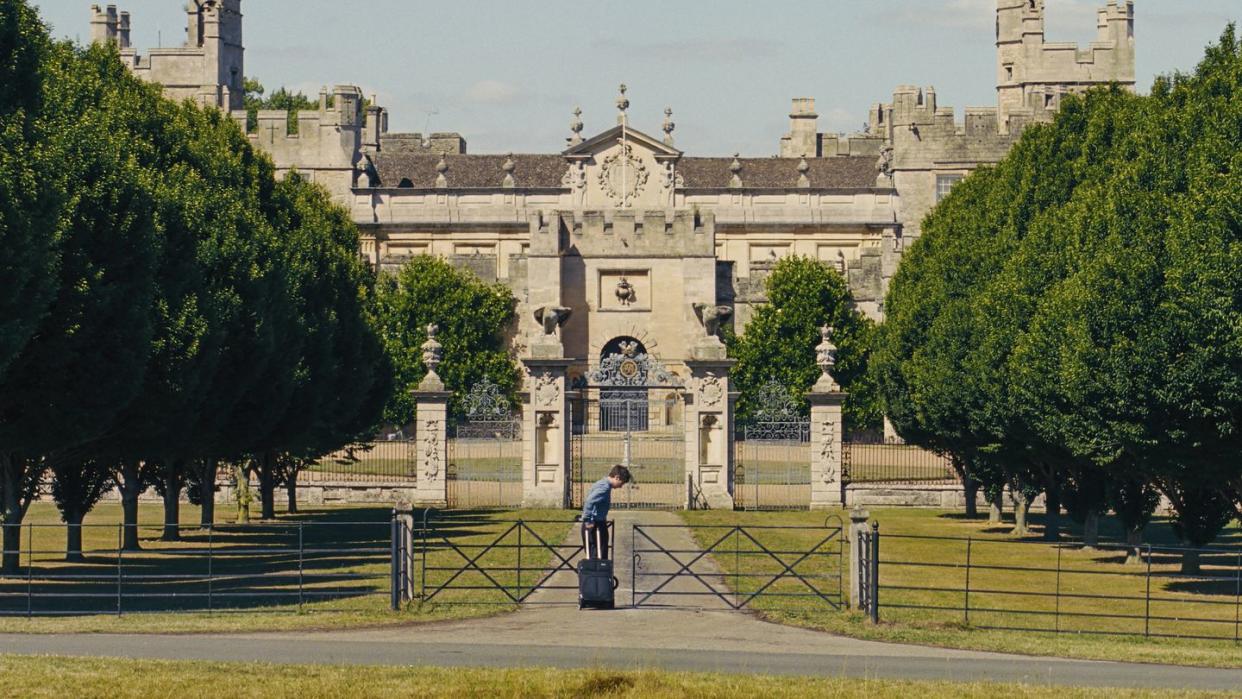
- Oops!Something went wrong.Please try again later.
Emerald Fennell’s hotly anticipated Saltburn has hit theaters in all its caustic glory. The revenge comedy tells the story of Oliver Quick (Barry Keoghan), an awkward first-year scholarship student at Oxford University who struggles to fit in with his upper-class peers. He’s invited to spend the summer at the sprawling estate of his well-to-do classmate Felix Catton (Jacob Elordi). What follows is a psychological thriller that plays out like a hybrid of The Talented Mr. Ripley and Brideshead Revisited, period-style. Despite the captivating performances amid the nail-biting turn-of-events, there’s one incontestable star of the film: the sprawling mansion.
The country estate that features in the film, known in real-life as Drayton House, is a crenelated manse based in Northamptonshire that has been in the Stopford-Sackville family since 1770. Every one of the 127 rooms of the Baroque-style estate is oozing with aristocratic charm. Just beyond, the sprawling 200 acres of land feature pools, gardens, and a hedge maze—all a fitting setting for Saltburn’s incendiary scenes.
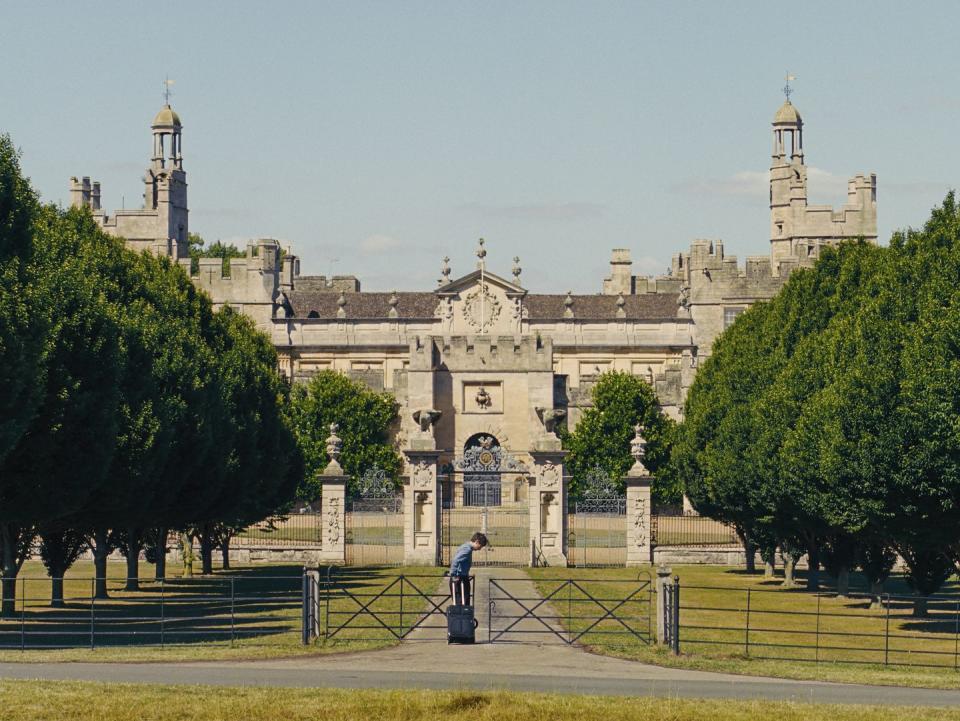
When scouting out a location for the film, production designer Suzie Davies says she was determined to find a place that could serve as a single filming location for the movie and has never been shown on film before. But above all, the decision came down to something beyond mere logistics. “Saltburn is about desire, obsession, and sweat,” Davies tells ELLE DECOR. “We are pulled into a storied, beautiful atmosphere, but there is trouble below the surface…[filming at Drayton House]. We wanted the audience to taste, touch, and smell the film,” Davies adds. Drayton House was perfect.
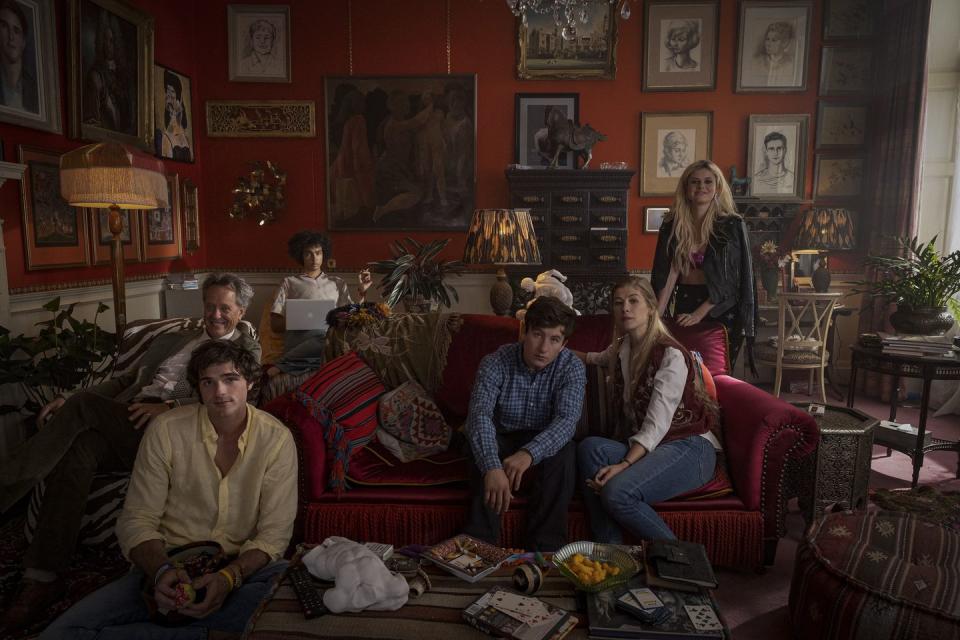
While filming on the grounds, Fennell built upon what was already there to create an ominous Saltburn world. Foreboding exterior shots set a sinister tone as an overbearing butler answers the door when Quick first arrives. Davies admits to augmenting the home’s exterior, the biggest intervention being a hedged labyrinth. “The maze is nearly all fictional,” she says, adding that the crew installed four giant classical minotaur sculptures on each corner of the maze for an added spooky presence.
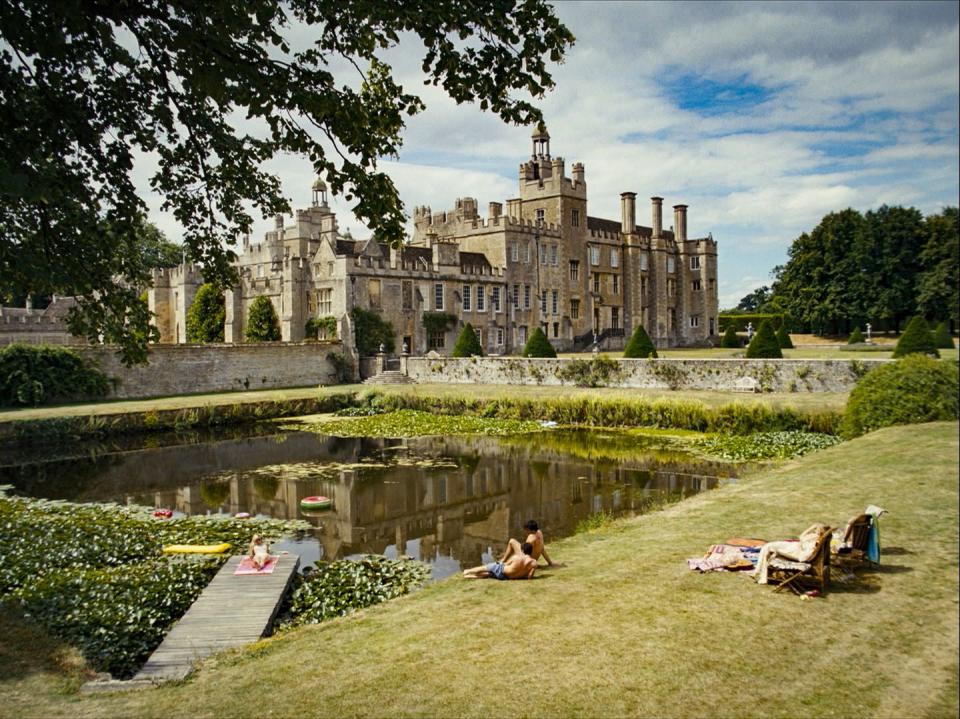
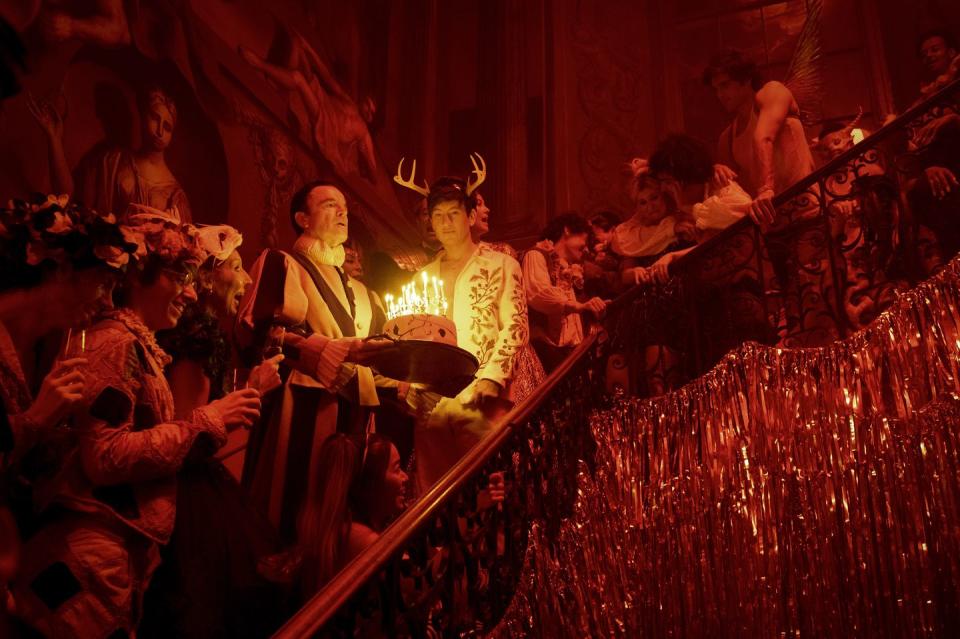
Inside, the filmmakers had a bit of fun, thanks to a rare opportunity. Generally, English heritage laws forbid the alteration of period rooms in filming. But since the house is private, the owners gave their blessing to Fennell and Davies to repaint and change the decor as needed. “In a National Trust or English heritage site, I wouldn’t be able to go near it!” Davies notes. For example, Felix and Oliver’s bedrooms are actual rooms in the house but tweaked to create a more cinematic effect. “We flipped them around, painted them, took tapestries down, and put them back up,” Davies says. “We turned a bedroom into a bathroom and a bathroom into a dressing room.”
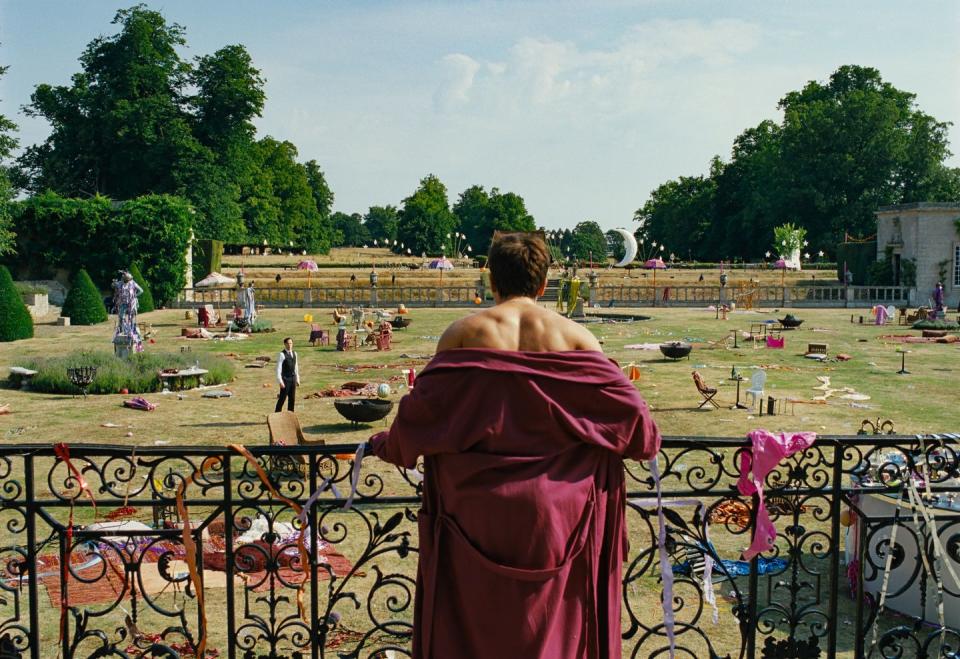
The crew used spatial planning to create a sense that something isn’t right. In the living room where we first encounter the Catton family, the furniture is unsettlingly compact. At one point, the Catton family watches TV in the smallest room, while there are 100 other spacious rooms. In another scene, a Lalique ashtray is overflowing with cigarette butts. “Often when you see properties like this in films, you feel like you can’t touch or sit on things. It feels prim and proper, and you are slightly in awe of the art, furniture, and textiles,” Davies says. “We wanted this film to feel lived in and fully inhabited by our characters.”
You Might Also Like

